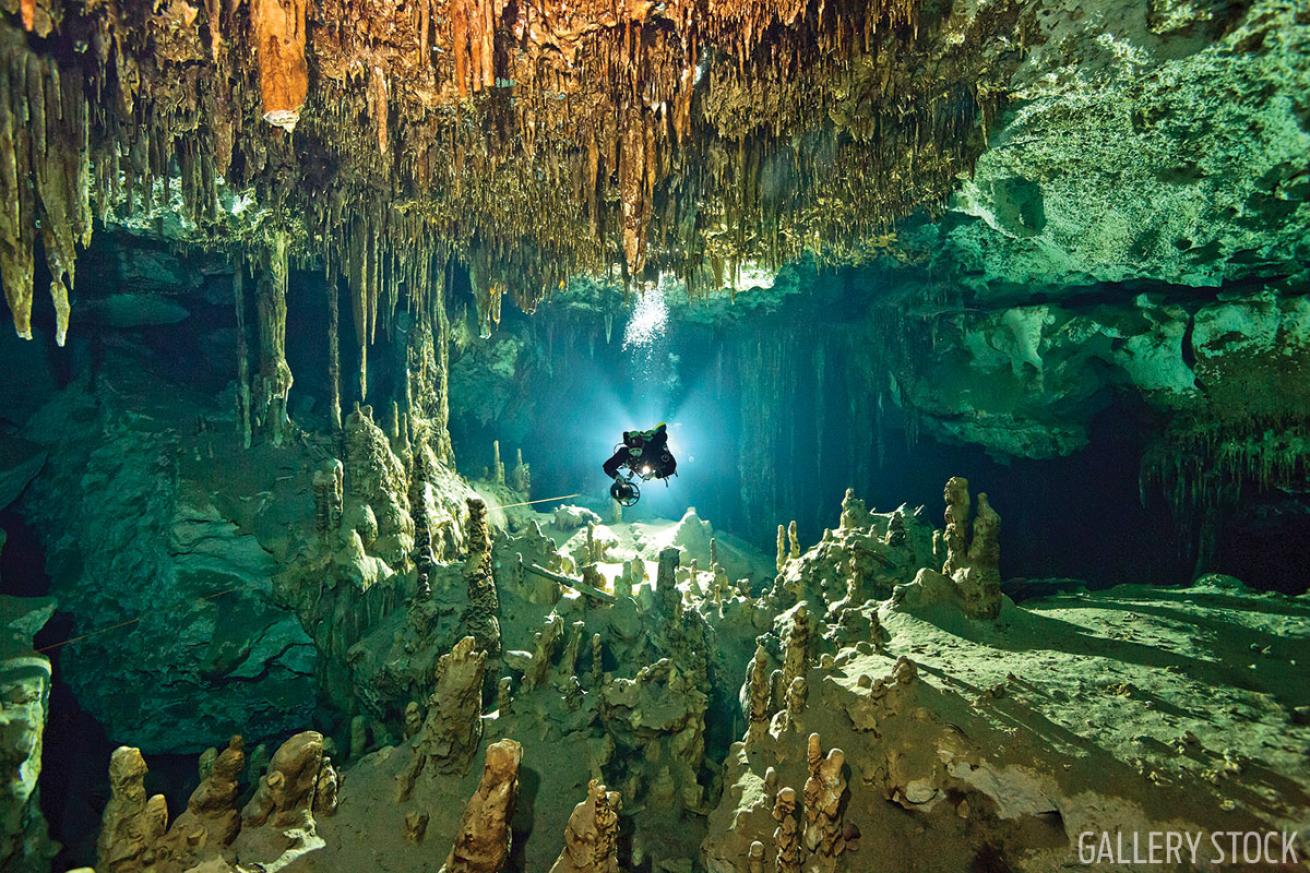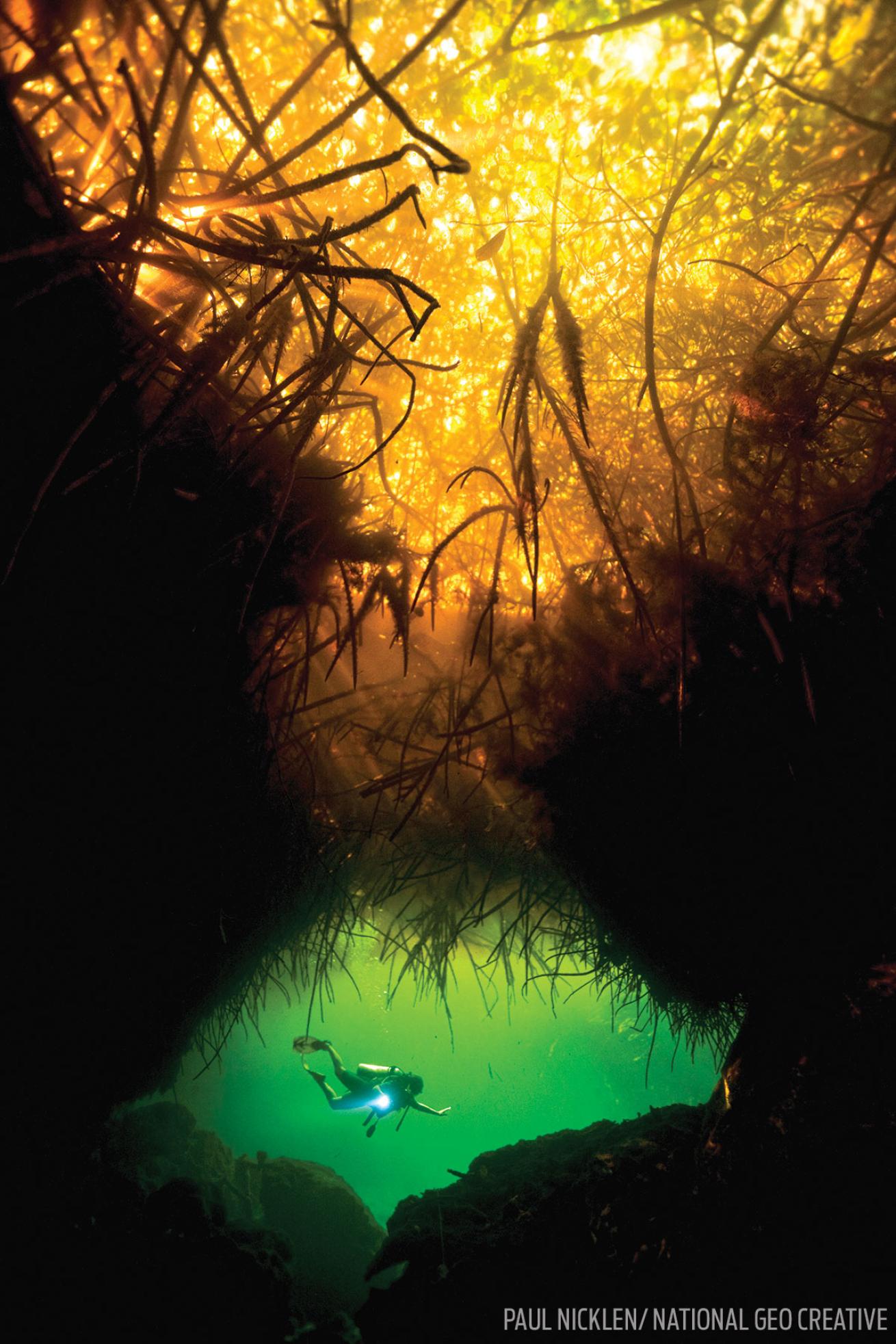Scuba Diving Cenotes In Mexico's Yucatan Peninsula

Gallery StockA Karst Landscape
Thousands of otherworldly cenotes, like Dos Ojos pictured above, pockmark Mexico's Yucatan Peninsula.
The cenotes of Mexico’s Yucatan Peninsula have fascinated people for thousands of years. To the Maya, these water-filled caves — connected to the world’s largest underground river systems — were portals to the underworld, Xibalba, and the dwelling place of the rain god, Chaac. Today they are a mecca for cave and cavern divers from all over the world.
Underwater archaeologists plumb their depths to find ancient remains and artifacts. Recreational divers fin into the mouths of their caverns for an adventure wholly different from the corals reefs just offshore. And underwater photographers love them for their gin-clear water and the magical quality of light that streams through the openings, illuminating the chambers.
“The only constant about the cenotes is that the landscape is ever-evolving,” says underwater photographer Lia Barrett. “Hit a sunny day where light rays are pouring through the surface at an angle, and the cathedral lighting will be stunning. Or catch a shallow, silty cenote after a heavy rain, and you might happen upon hues of orange, green, yellow and red in your frame.”
- Learn some tips for photographing cenotes
This subterranean world exists thanks to the geology of the Yucatan Peninsula, a massive slab of limestone. When rain falls on the porous rock, it doesn’t gather into rivers or lakes on the surface, but rather drains through like a sponge. Over million of years, the water dissolved channels in the rock, creating a maze of rivers and lakes underground. This unique landscape, which is also seen in Florida’s network of springs and underground rivers, is called a karst.
The cenotes themselves form when the roof of an underground chamber or tunnel becomes so weak that it collapses, creating an opening to the surface. Thousands of these sinkholes pockmark the Yucatan, each with its own personality. The most popular cenotes are found along the Riviera Maya — just a short drive south of the resorts in Cancun, Playa del Carmen and Tulum.

Paul Nicklen/ National Geographic CreativeAkumal
One of the many subterranean sinkholes that can be explored by scuba divers.
Wildlife is rare in freshwater cenotes like Dos Ojos, aside from some small crustaceans and fish that have evolved to inhabit the caves. It’s the rock features — from massive stalactites and stalagmites to fragile soda-straw formations — that really steal the show. At Dos Ojos, which means “two eyes,” two neighboring cenotes connect via a shared cavern and are explored via two routes: The Barbie Line is tailored to open-water divers with limited experience in overhead environments, while the Bat Cave Line is for more-experienced divers. Other cenotes connect to the ocean and hold a mix of fresh and salt water, like Casa Cenote, where divers can explore among the mangrove roots.
In cenotes that connect to the sea, divers might descend through a shimmering layer in the water called a halocline. This happens when heavier seawater settles below the layer of fresh water. At Angelita, a cloudy layer of hydrogen sulfide sits between the fresh and salt waters, creating the illusion of a floor or midwater river.
“Angelita is one of my favorites, mostly because of the false bottom and eerie quality,” Barrett says. “I also like Casa Cenote because it has so many nooks and crannies, and because it is so shallow. The light on a sunny day is just spectacular.”
Go Now
Certification Requirements: The Yucatan's cenotes are largely accessible with an open water diver certification, but exploring the deeper, more-intricate caverns requires cavern diver, intro to cave diving, or full cave diver certifications.
When To Go: The cenotes are divable year-round.
Water Temperature: About 75 degrees fahrenheit year-round
Visibility: 300 feet










